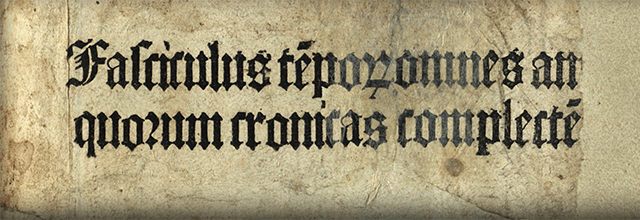Files
Download Full Text (195 KB)
Abstract
The basic purpose and outline of a world chronicle was to outline the history of humanity, the kingdoms, and Christendom for the reader. When the method of producing chronicles changed from manuscript to the printed page, there was a corresponding physical change in the layout and appearance of the final product. Whether through the use of cheaper material (paper), a shift in design and style, or a further customizability, these changes reflected and signified consumers’ evolving expectations of the product itself.
Incunables gradually transformed from heavily decorated, printed editions resembling earlier manuscripts to increasingly simple printings. PSU’s edition of the Fasciculus temporum allows us to shine a spotlight on a variety of changes in the production and layout of written narratives and world chronicles, from hand-written manuscripts to the age of print.
Publication Date
2020
Subjects
Incunabula, Illumination, History of the Book, Chronicle, Printing
Disciplines
European History | Medieval History
Persistent Identifier
https://archives.pdx.edu/ds/psu/35065
Recommended Citation
Kerstens, Philippe, "Manuscripts, Incunables, Books: How and Why the World Chronicles Changed" (2020). Fasciculus Temporum. 4.
https://archives.pdx.edu/ds/psu/35065




Comments
This essay is part of a series of research projects written for Professor John Ott's Spring 2020 Medieval History seminar on PSU Library Special Collections' Malleus maleficarum and Fasciculus temporum codex.